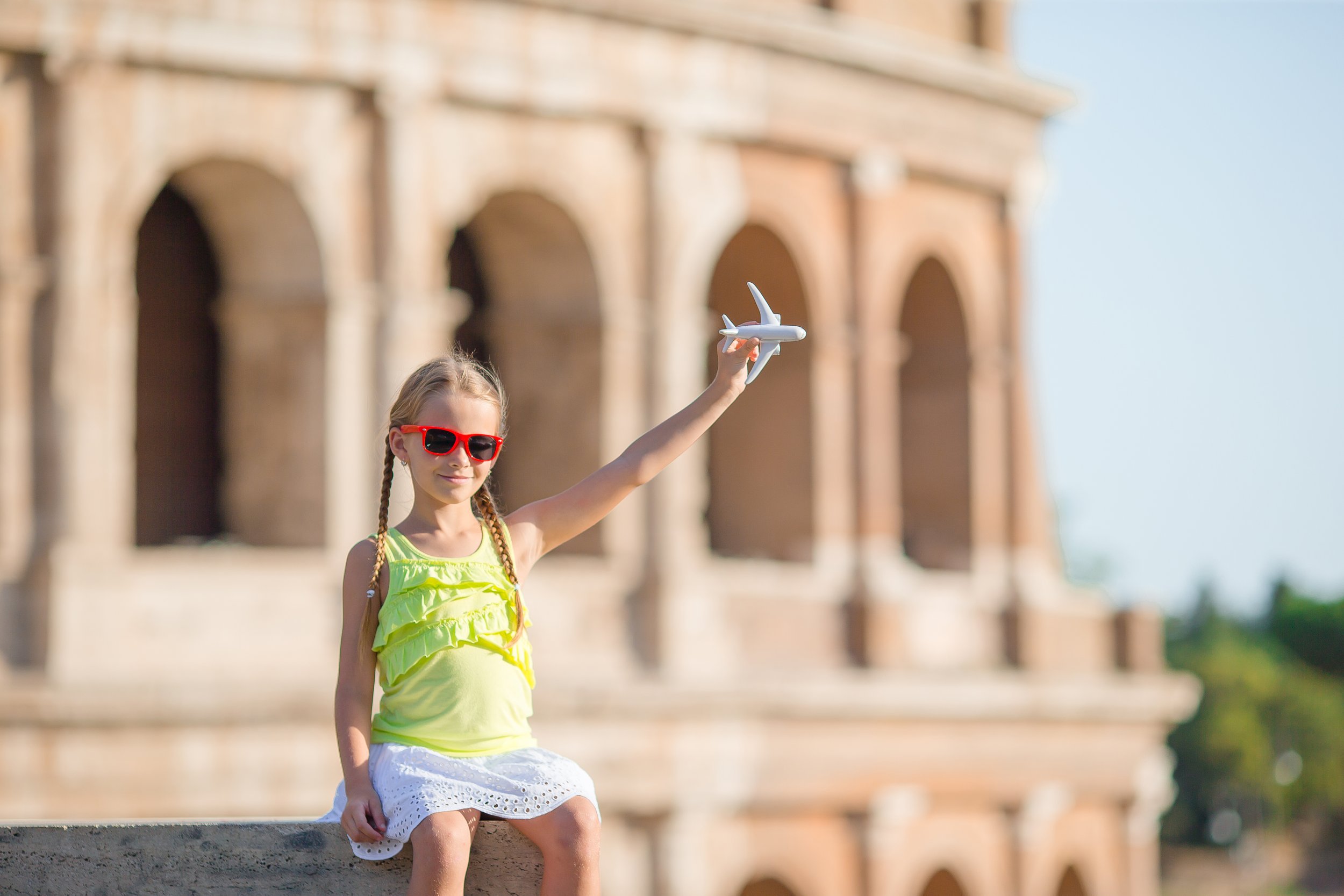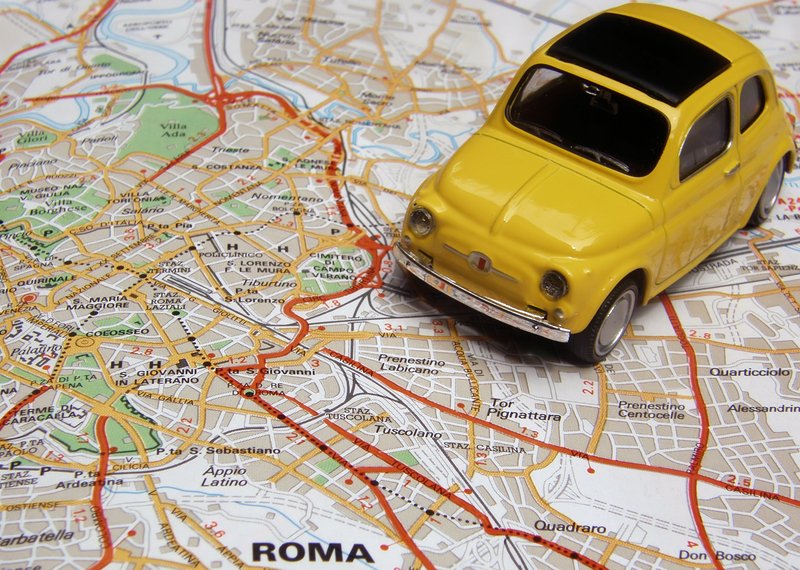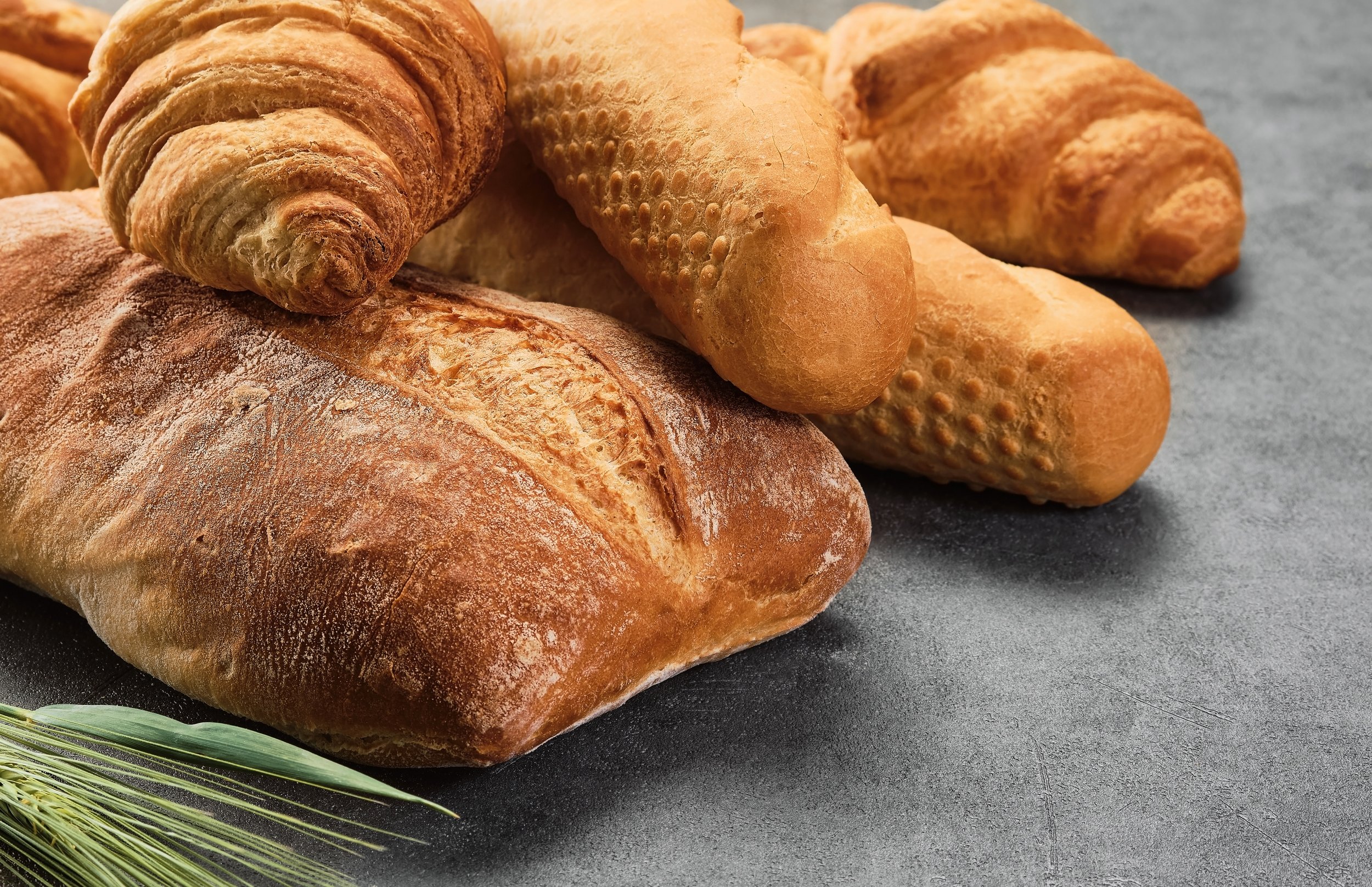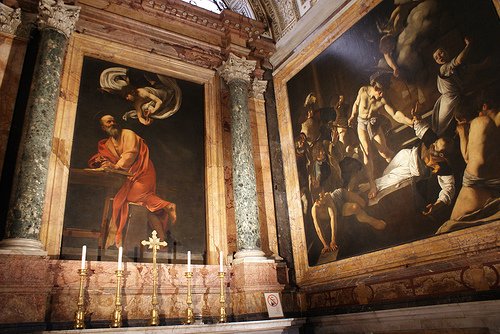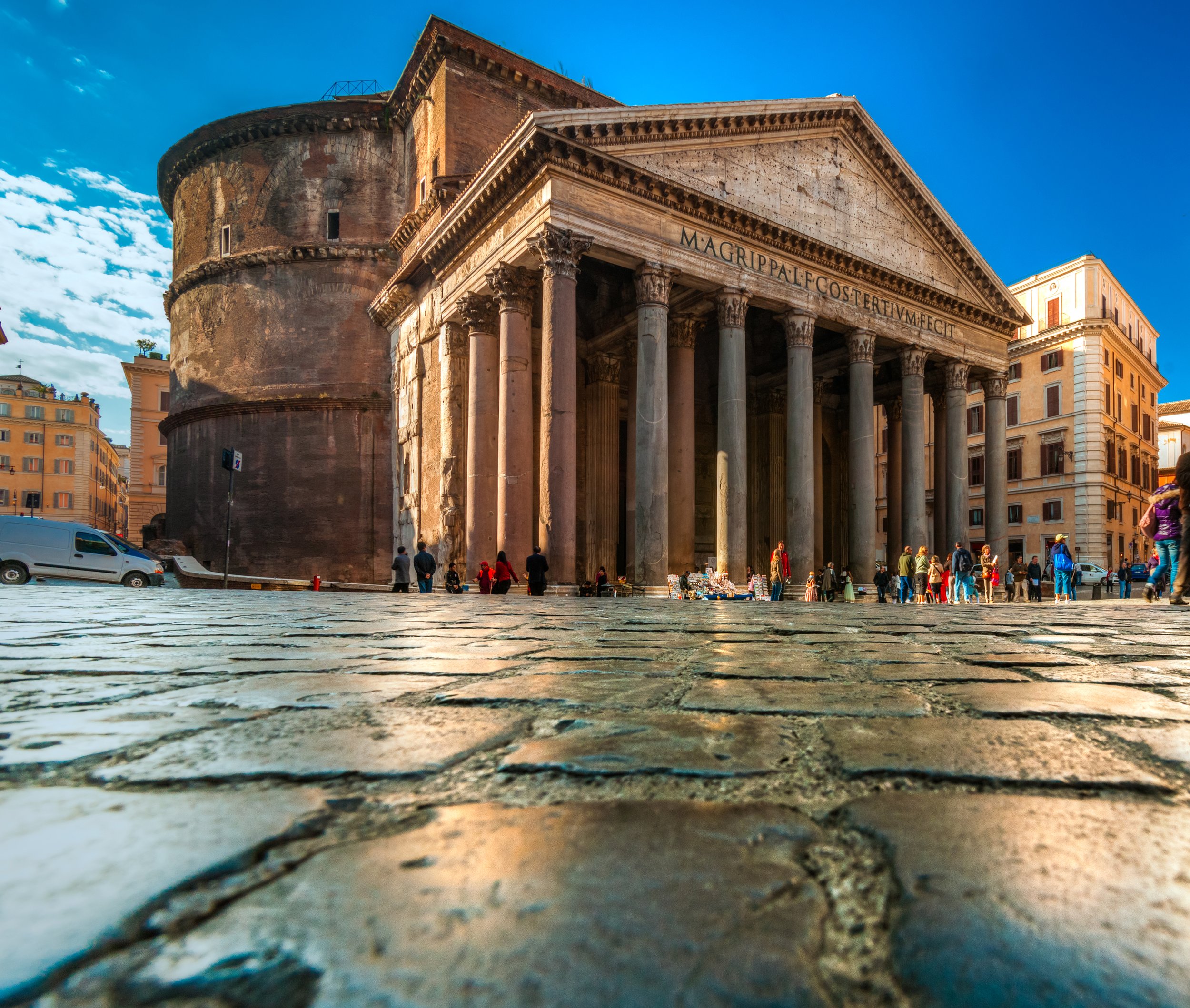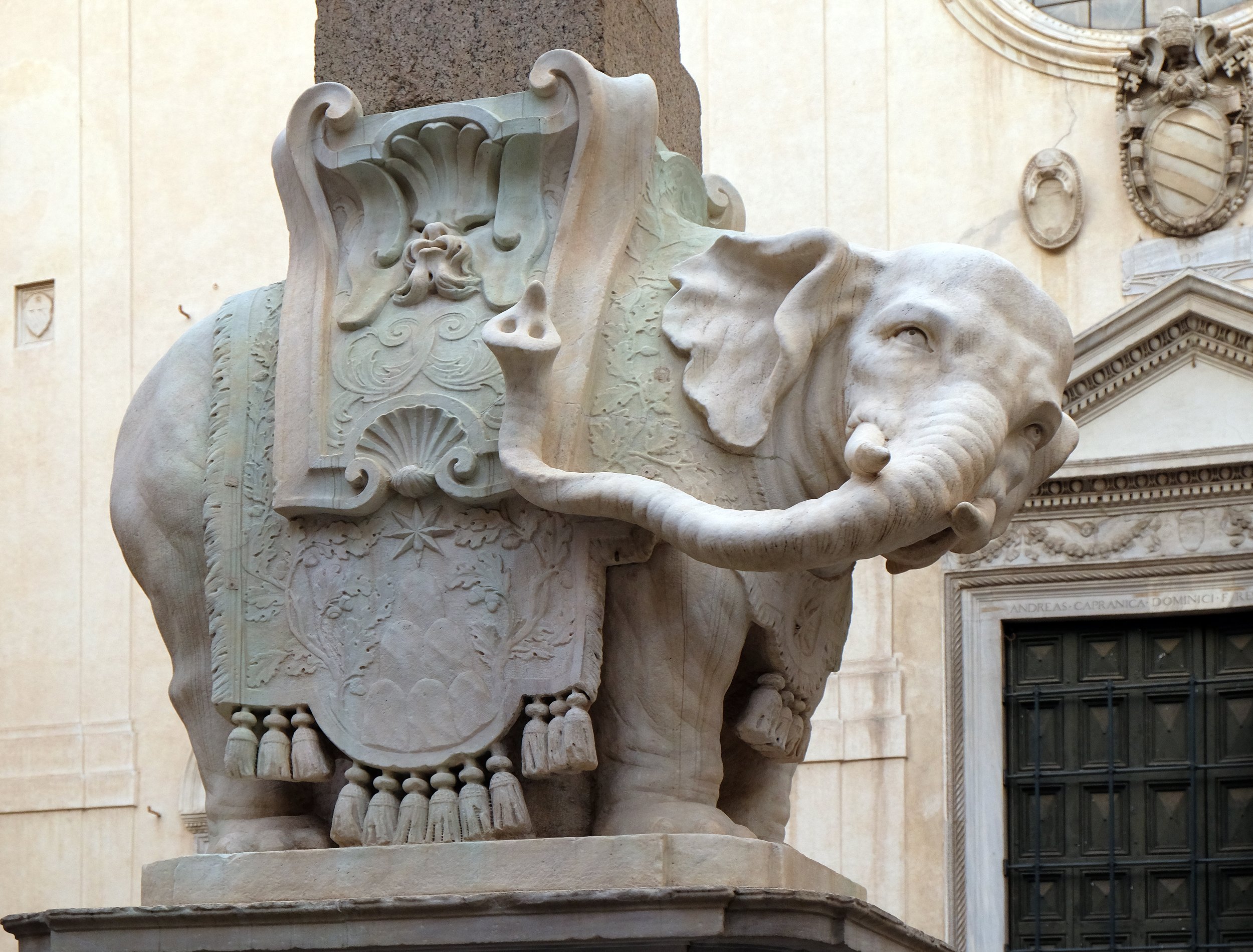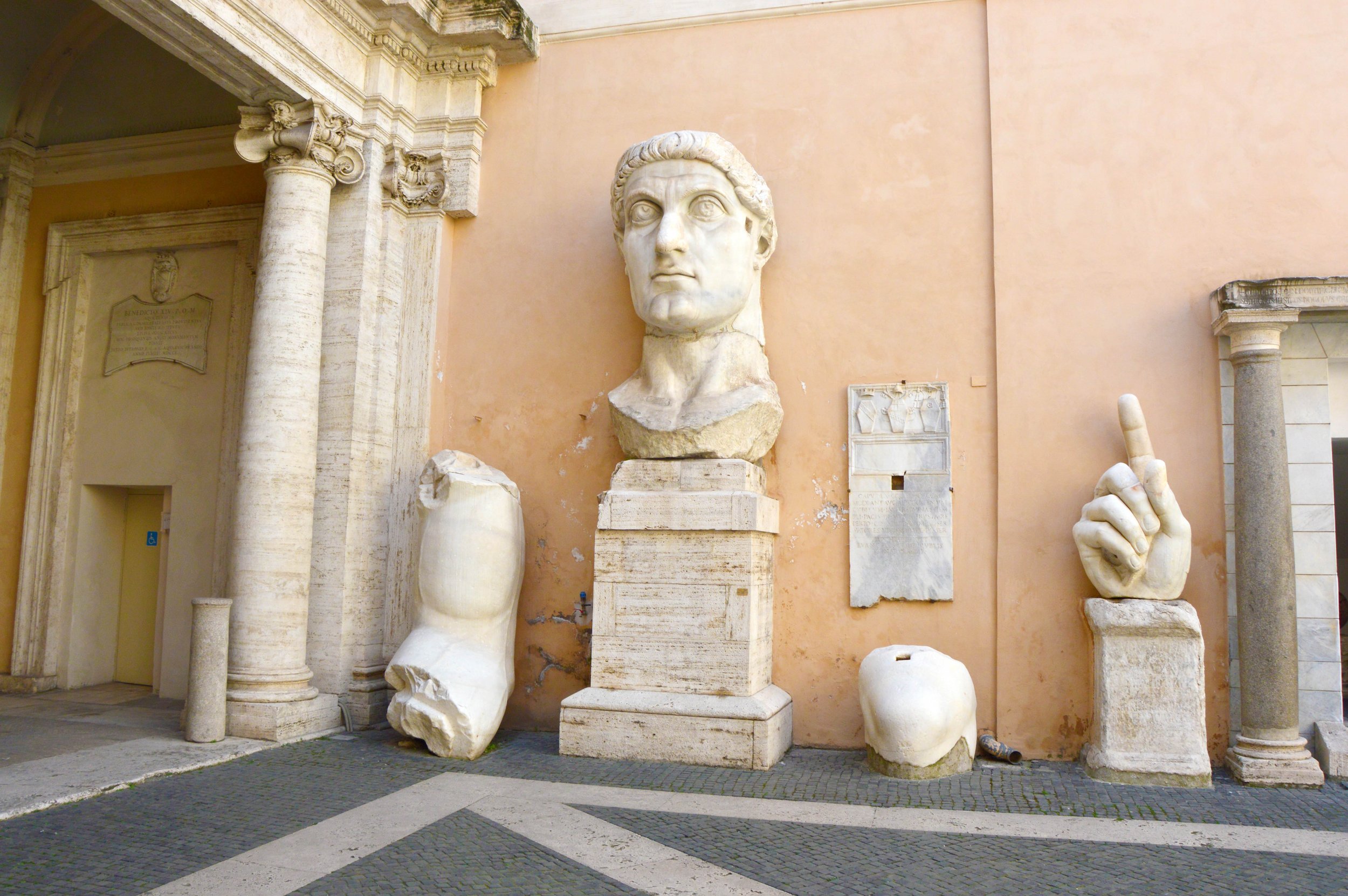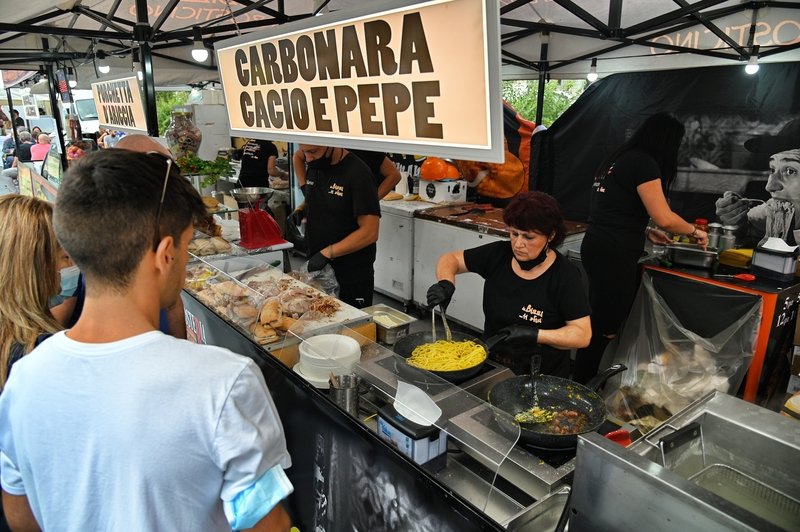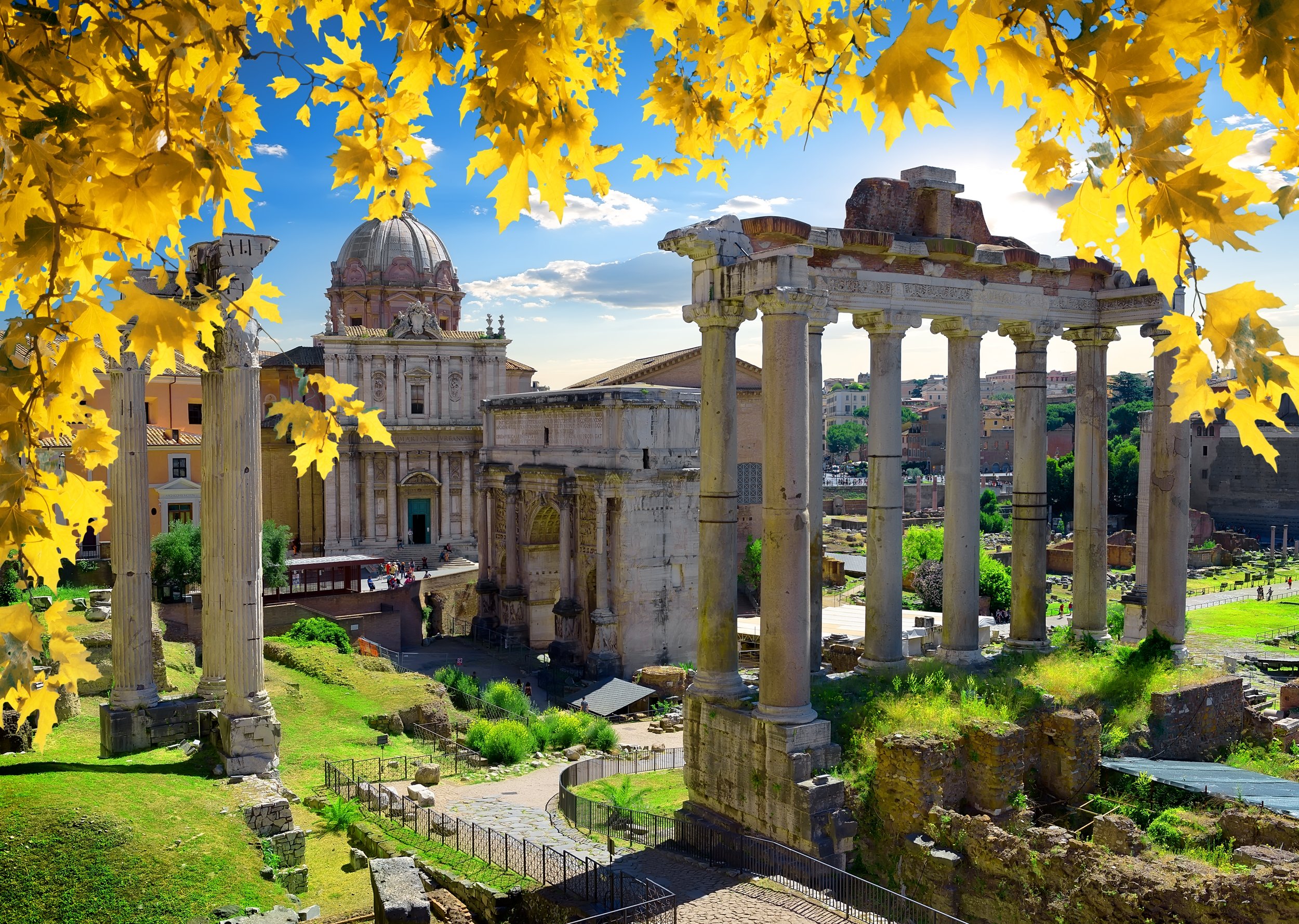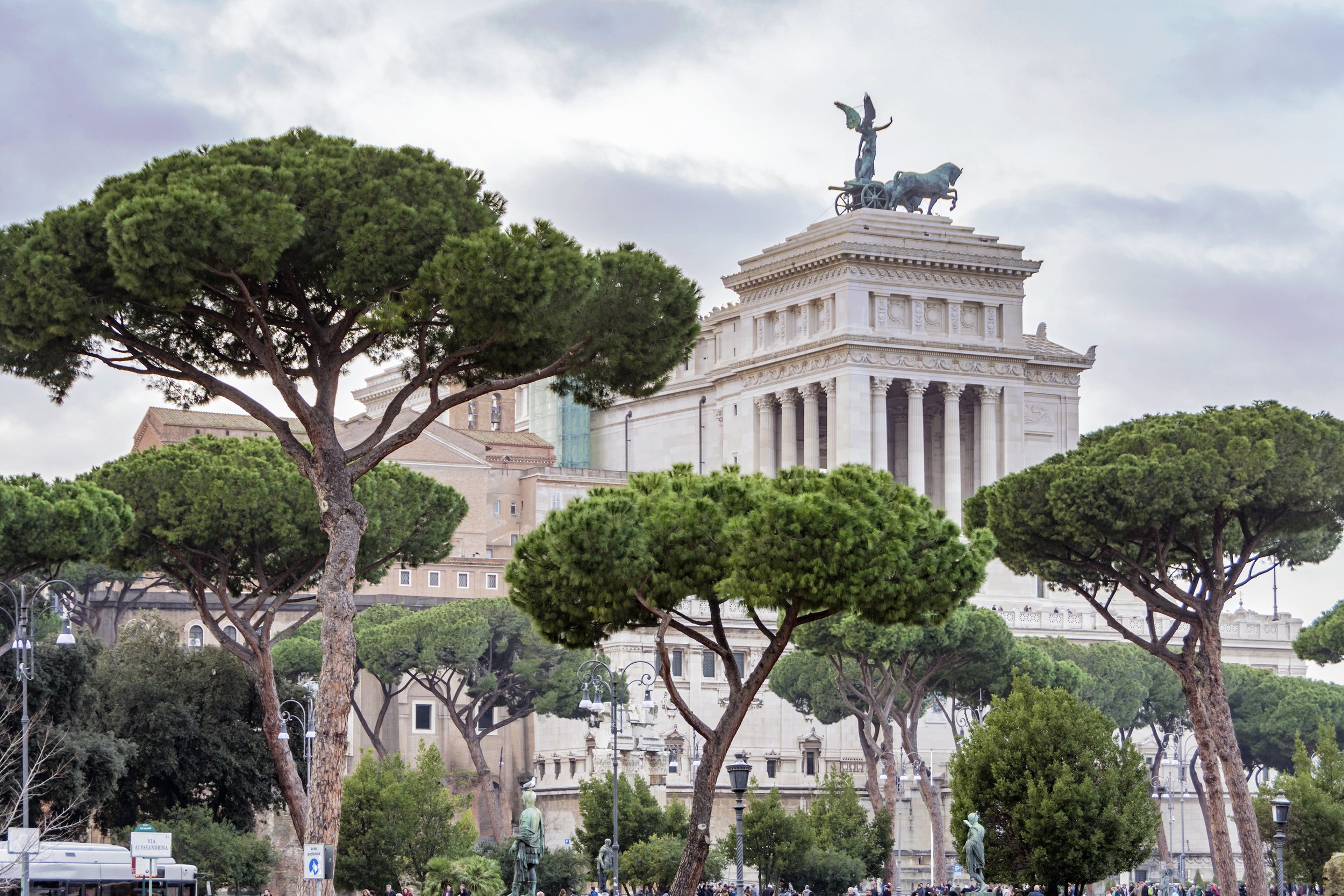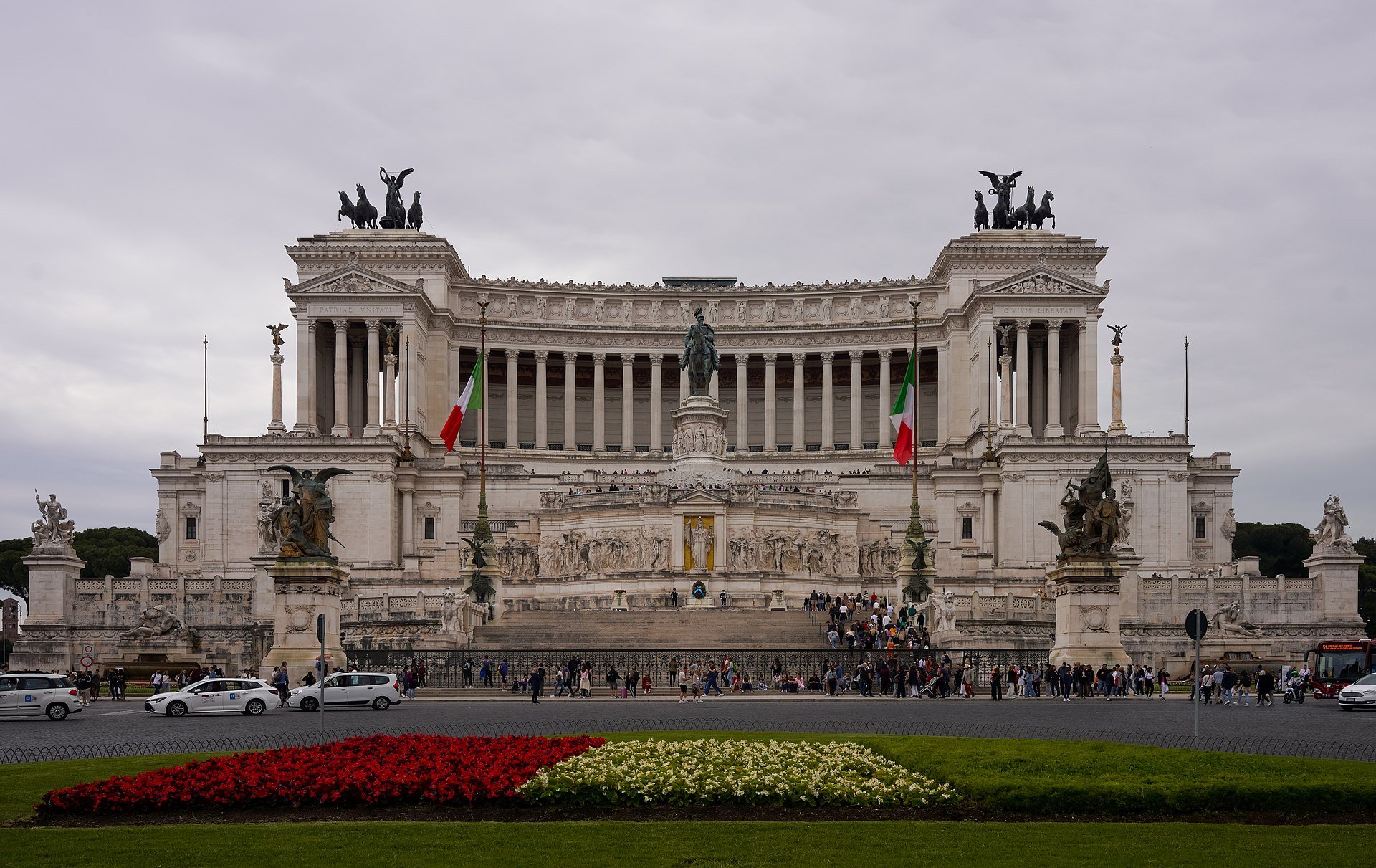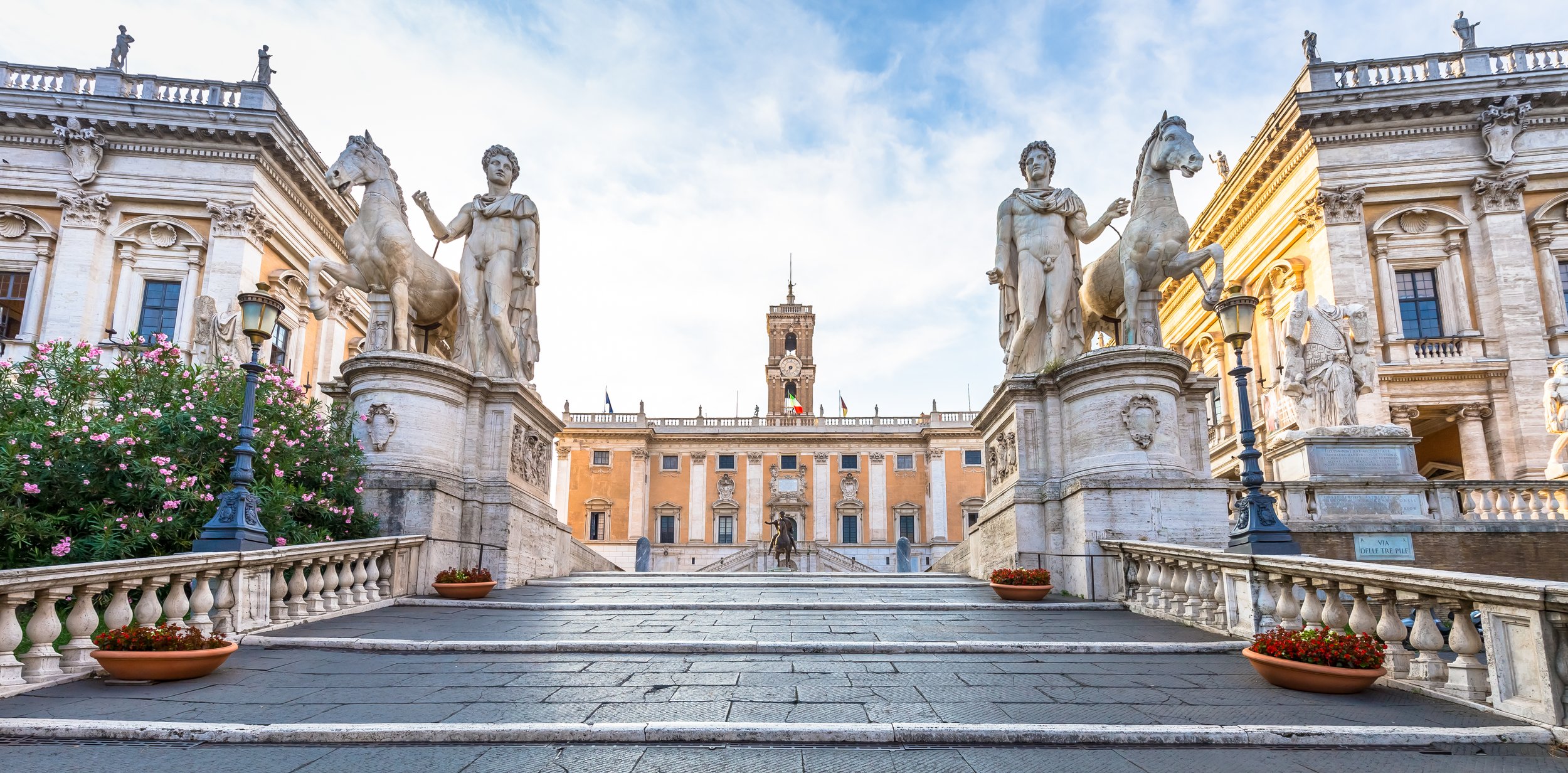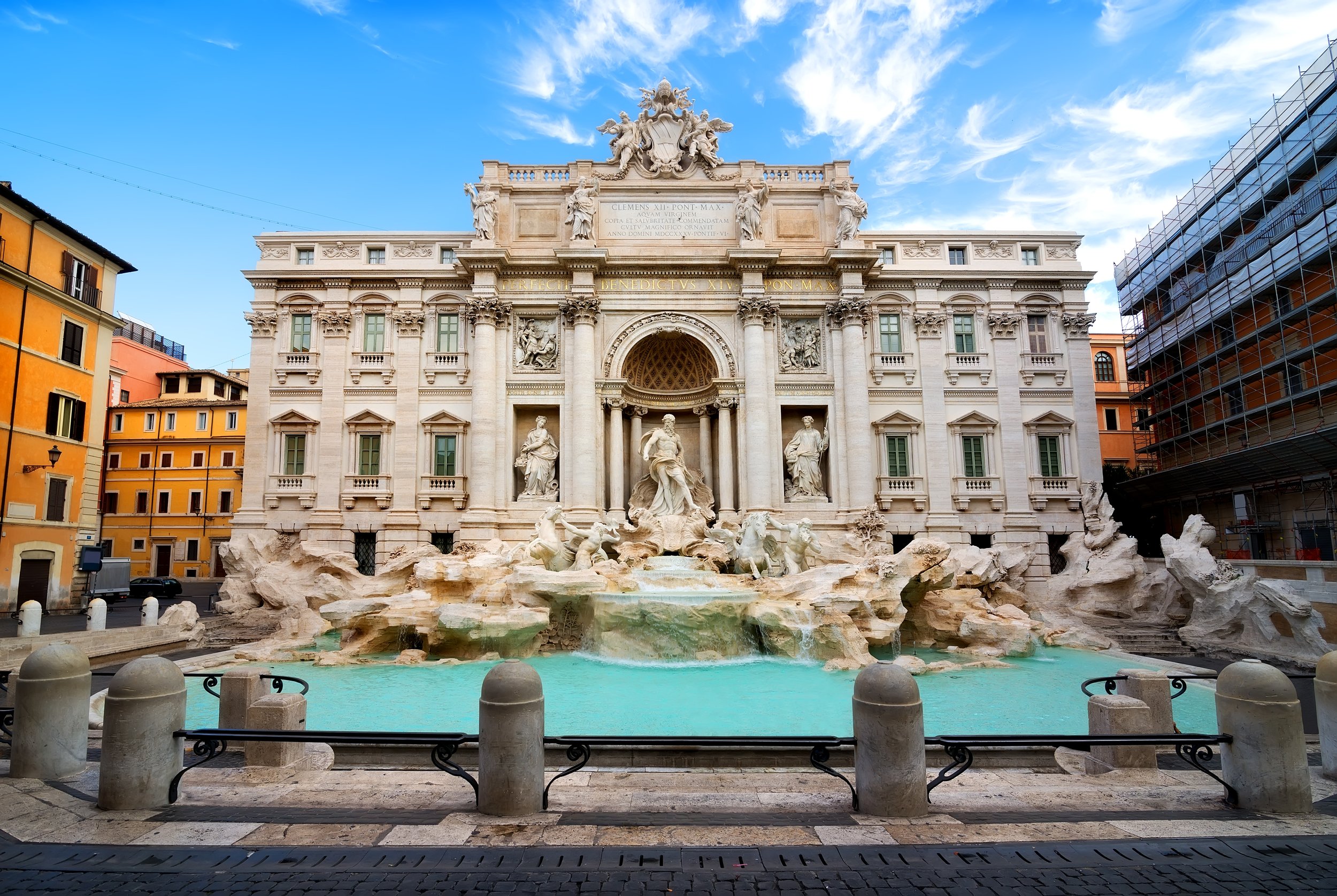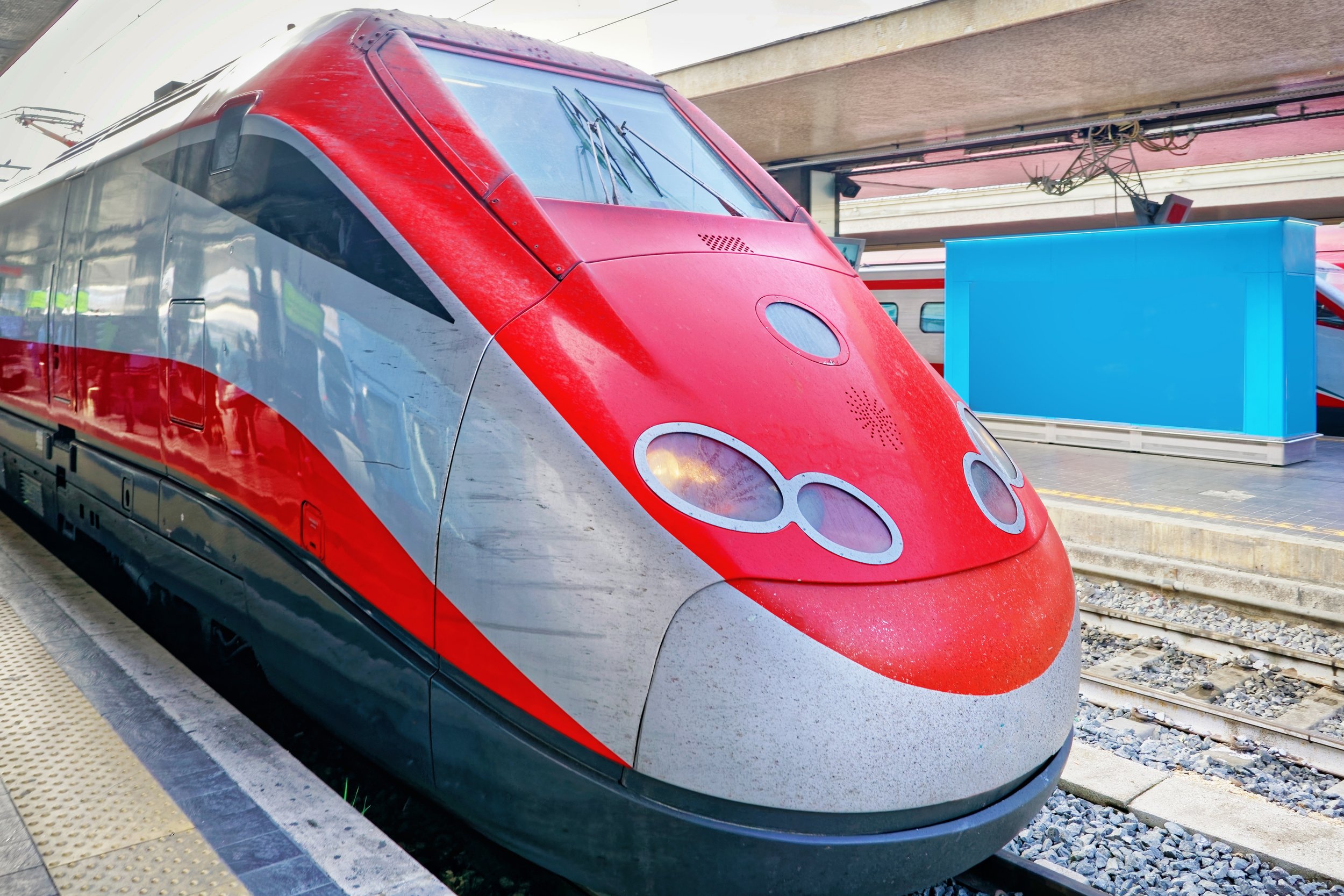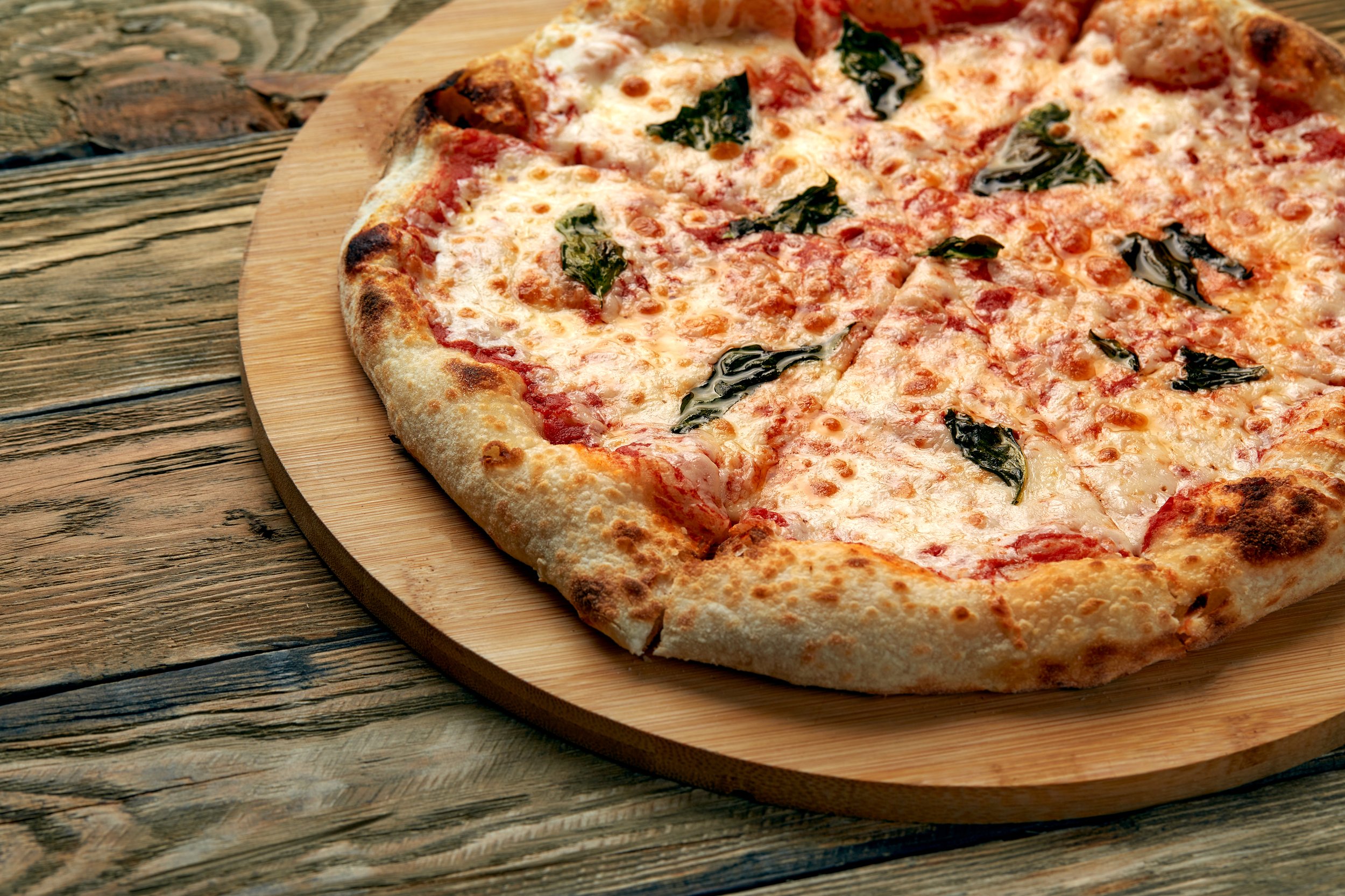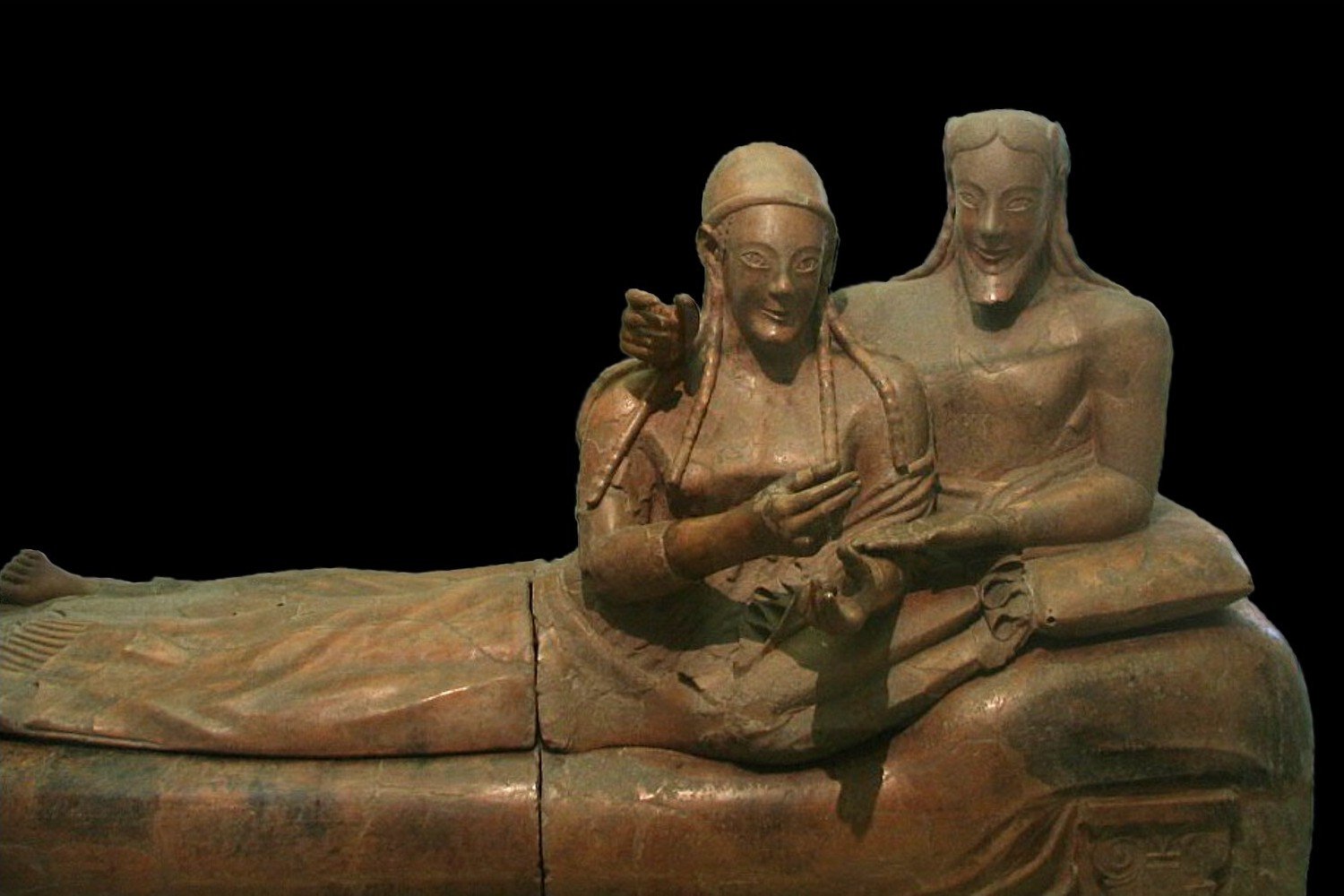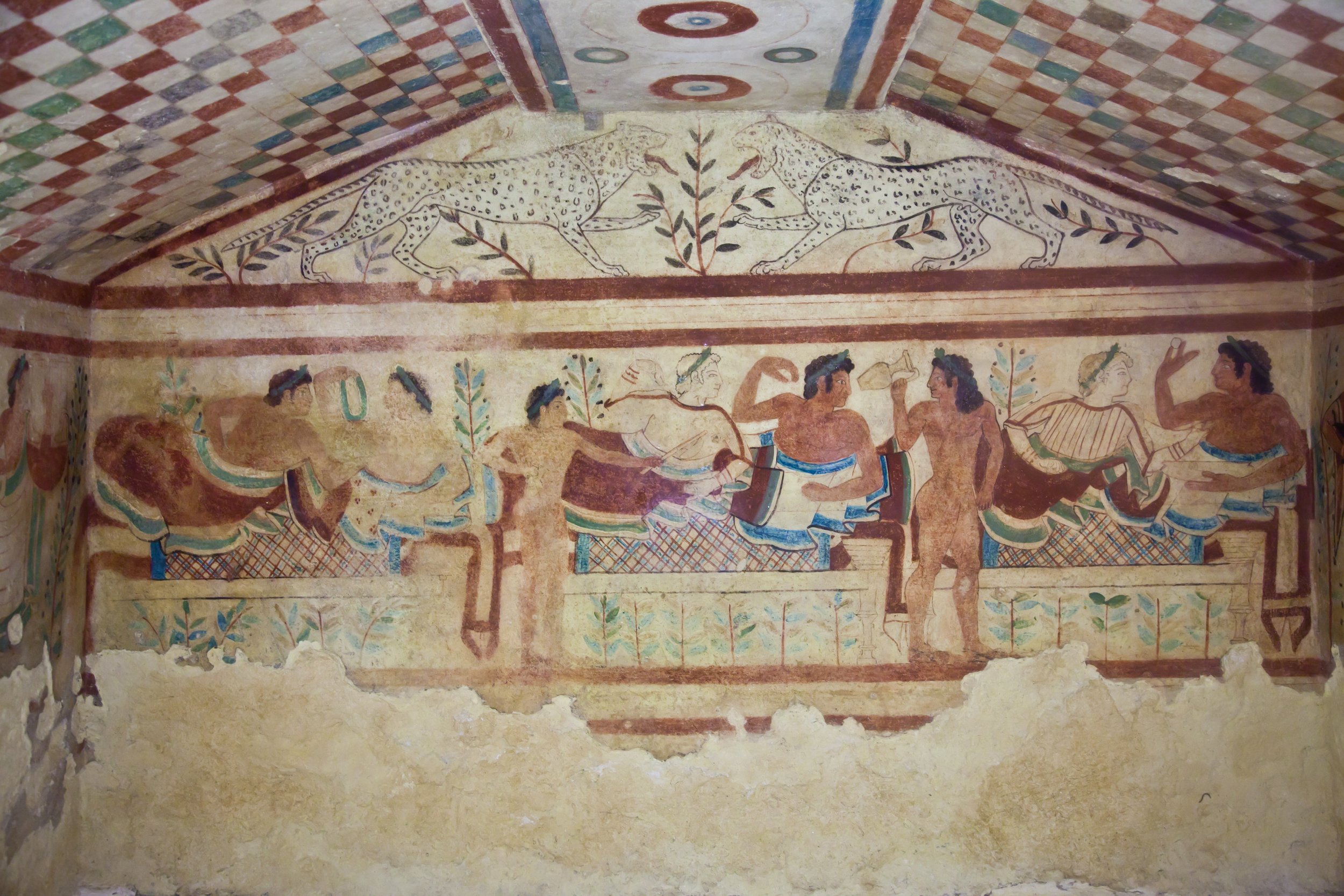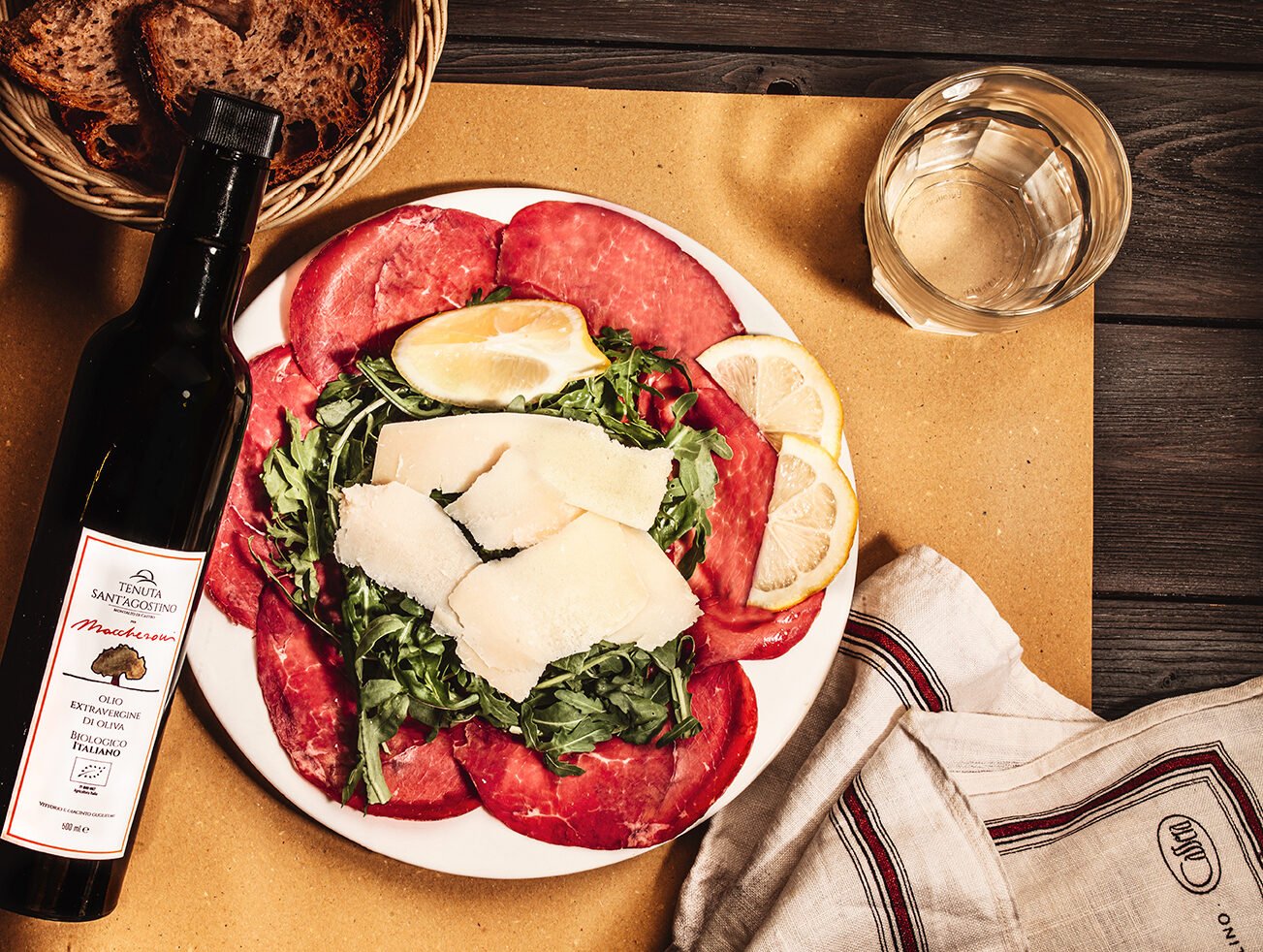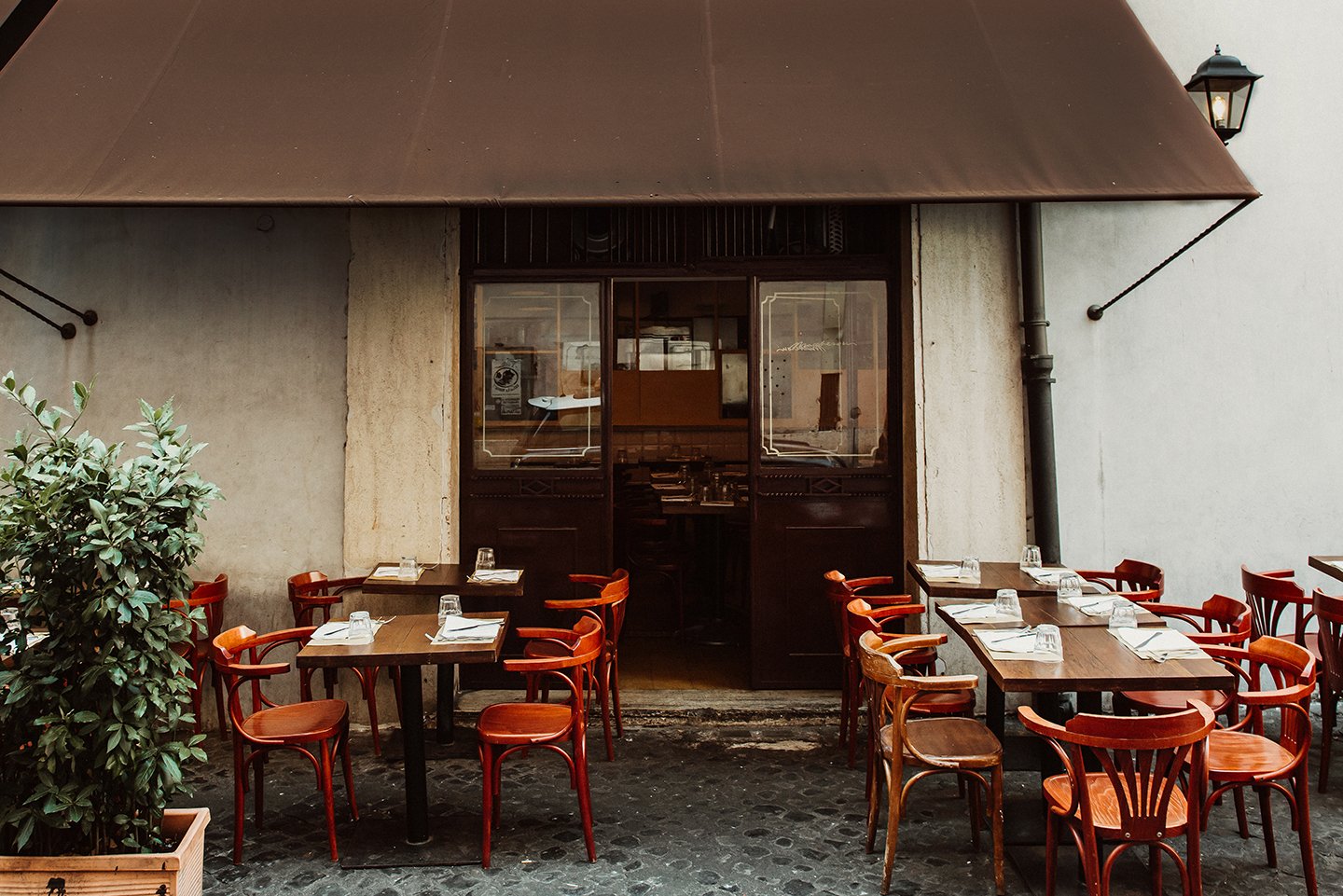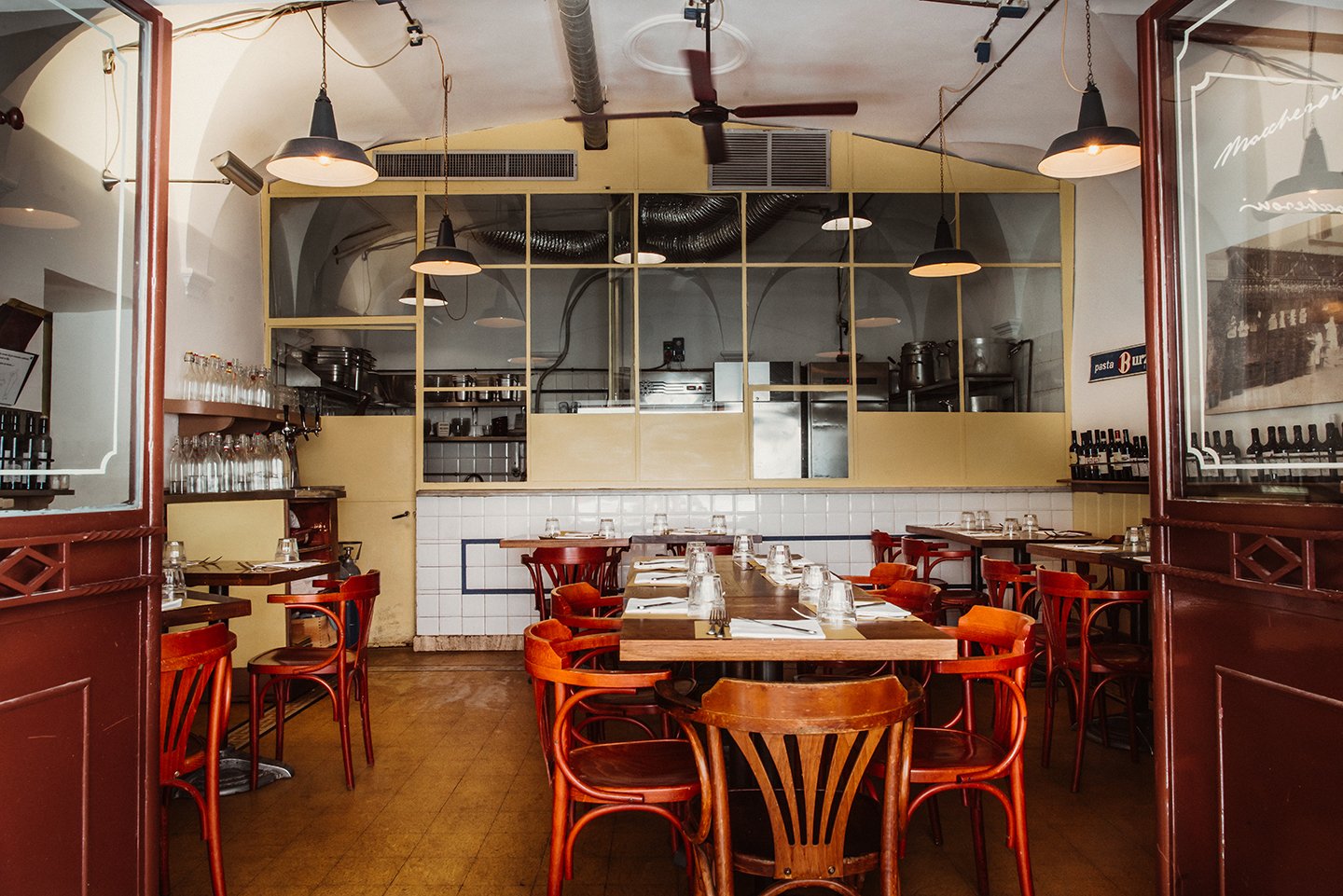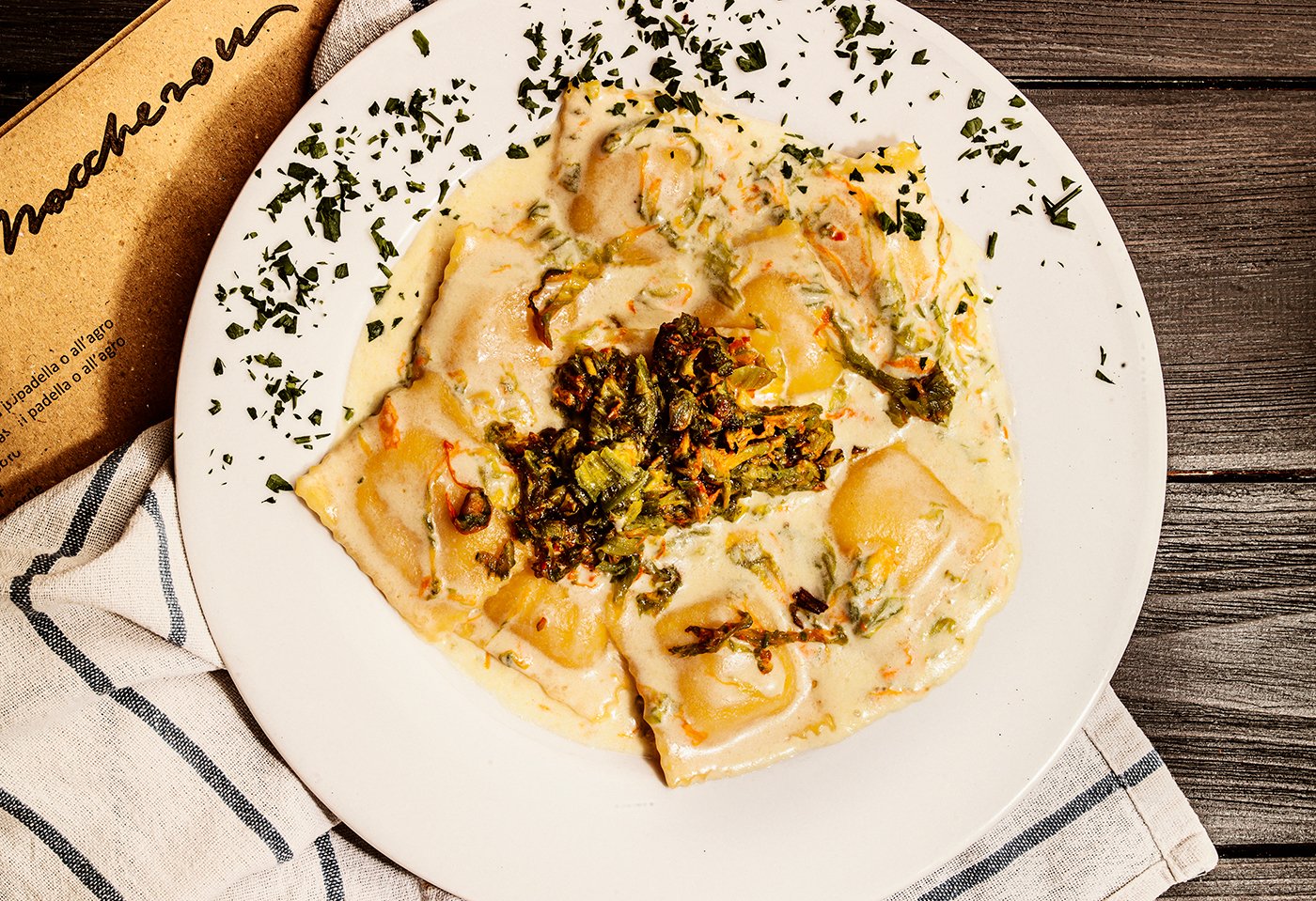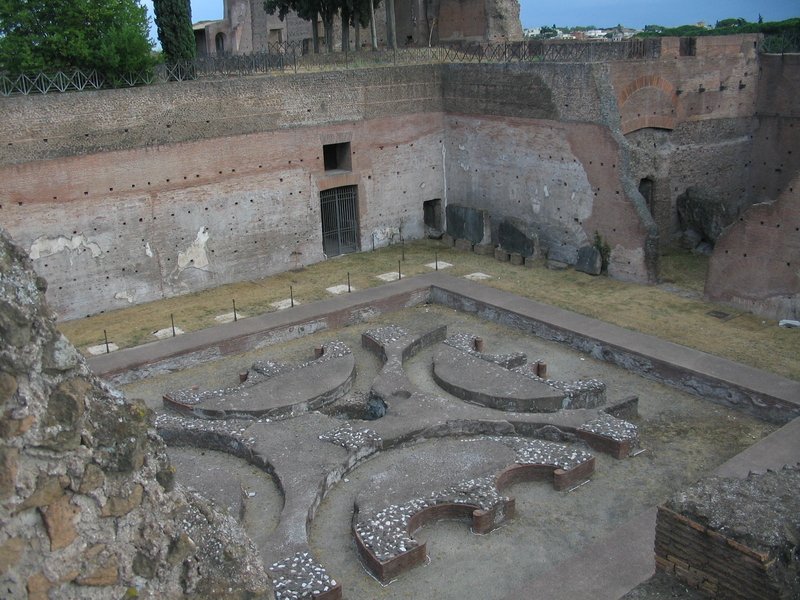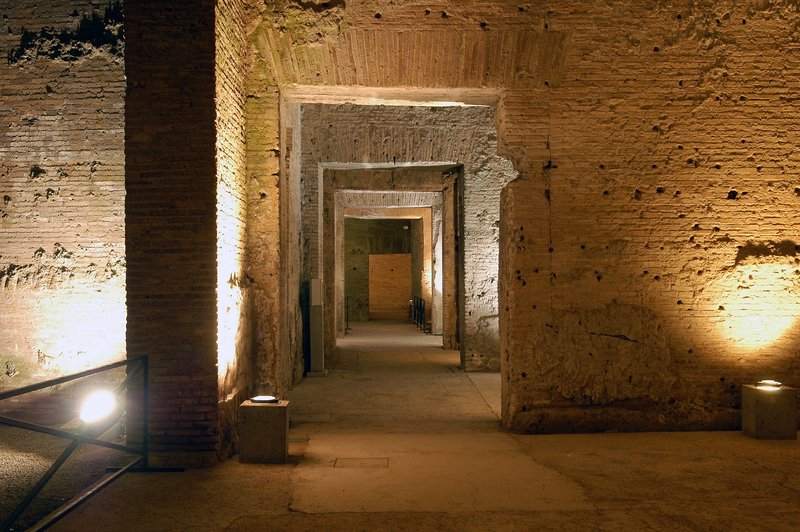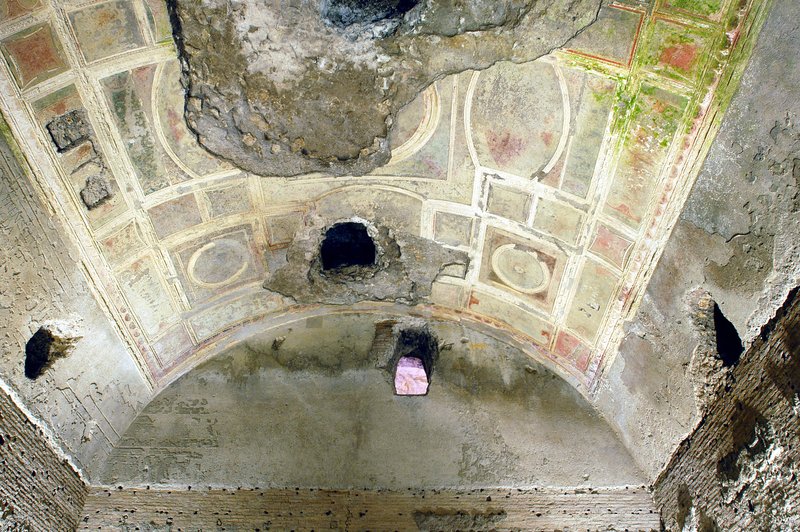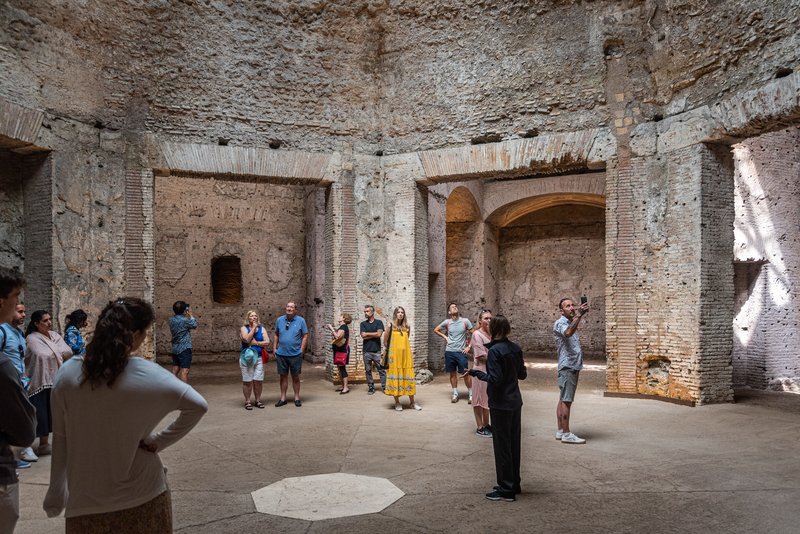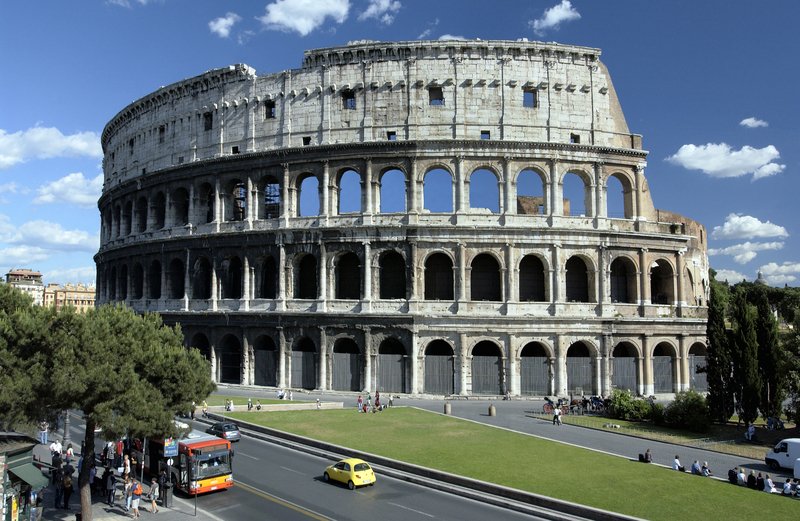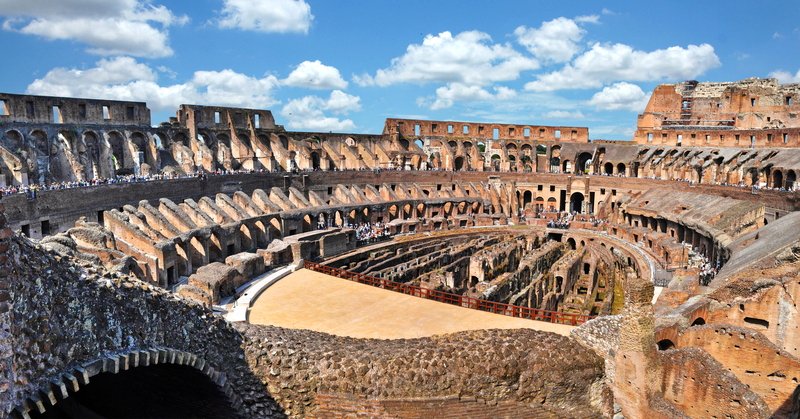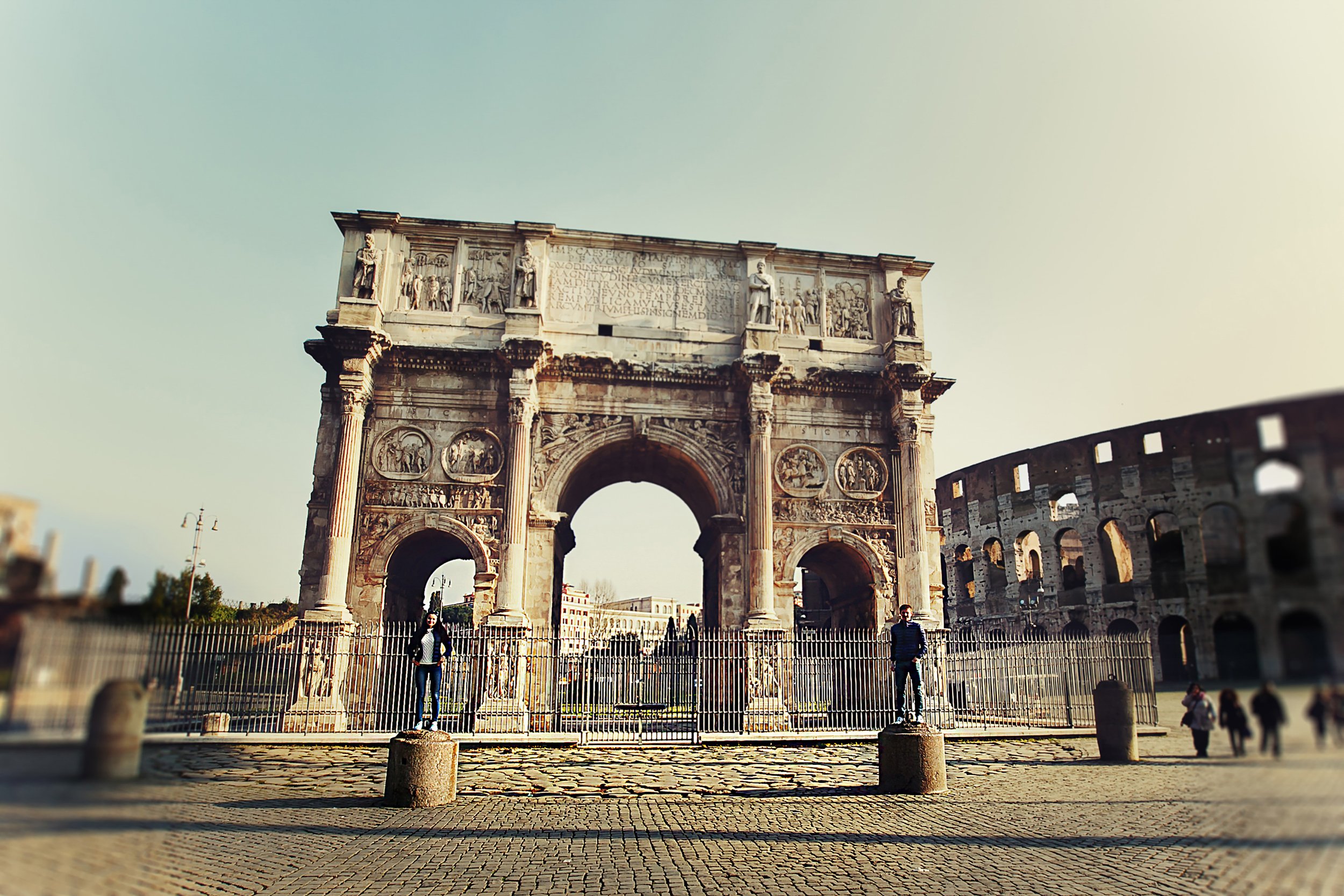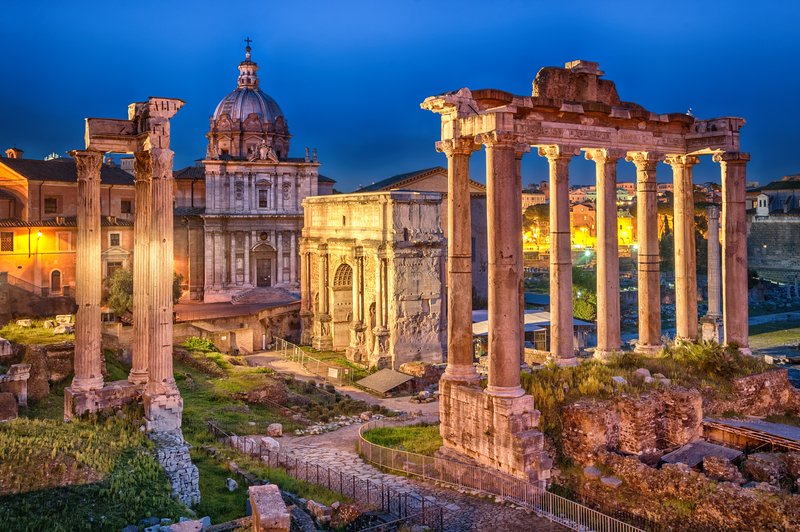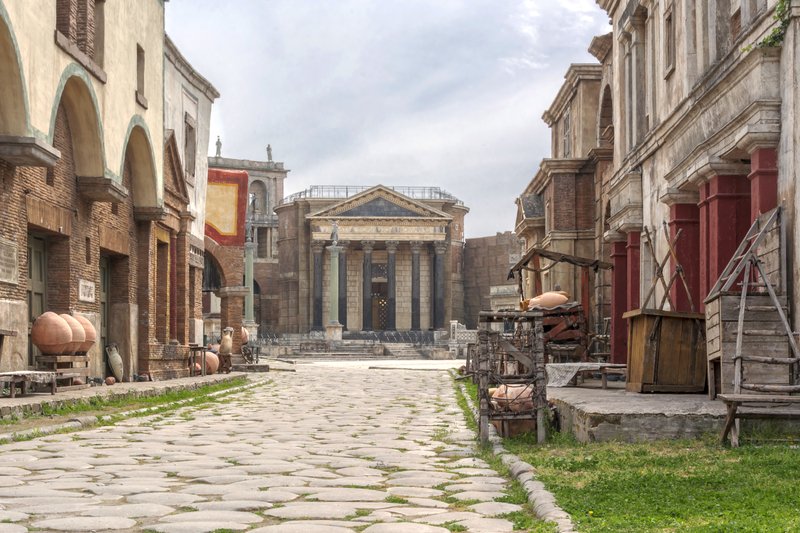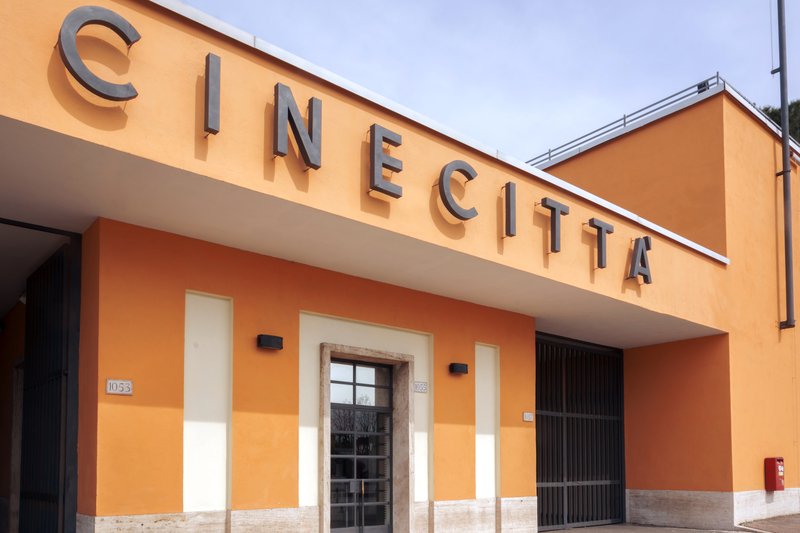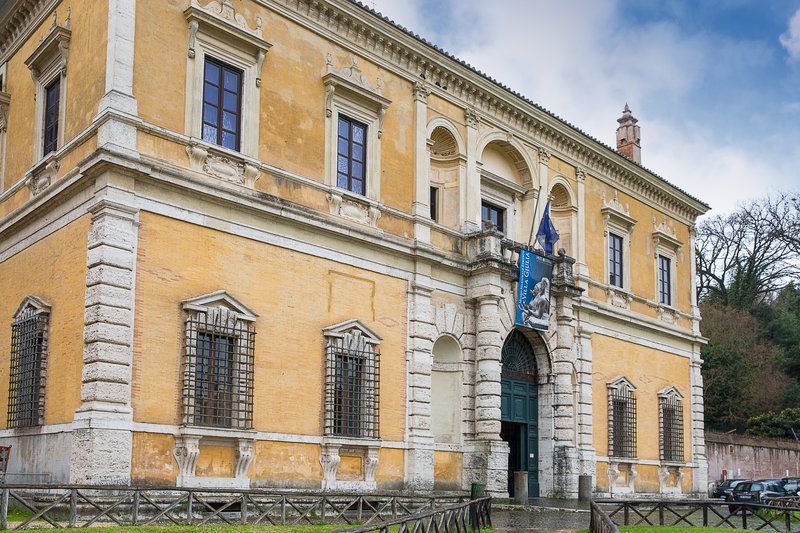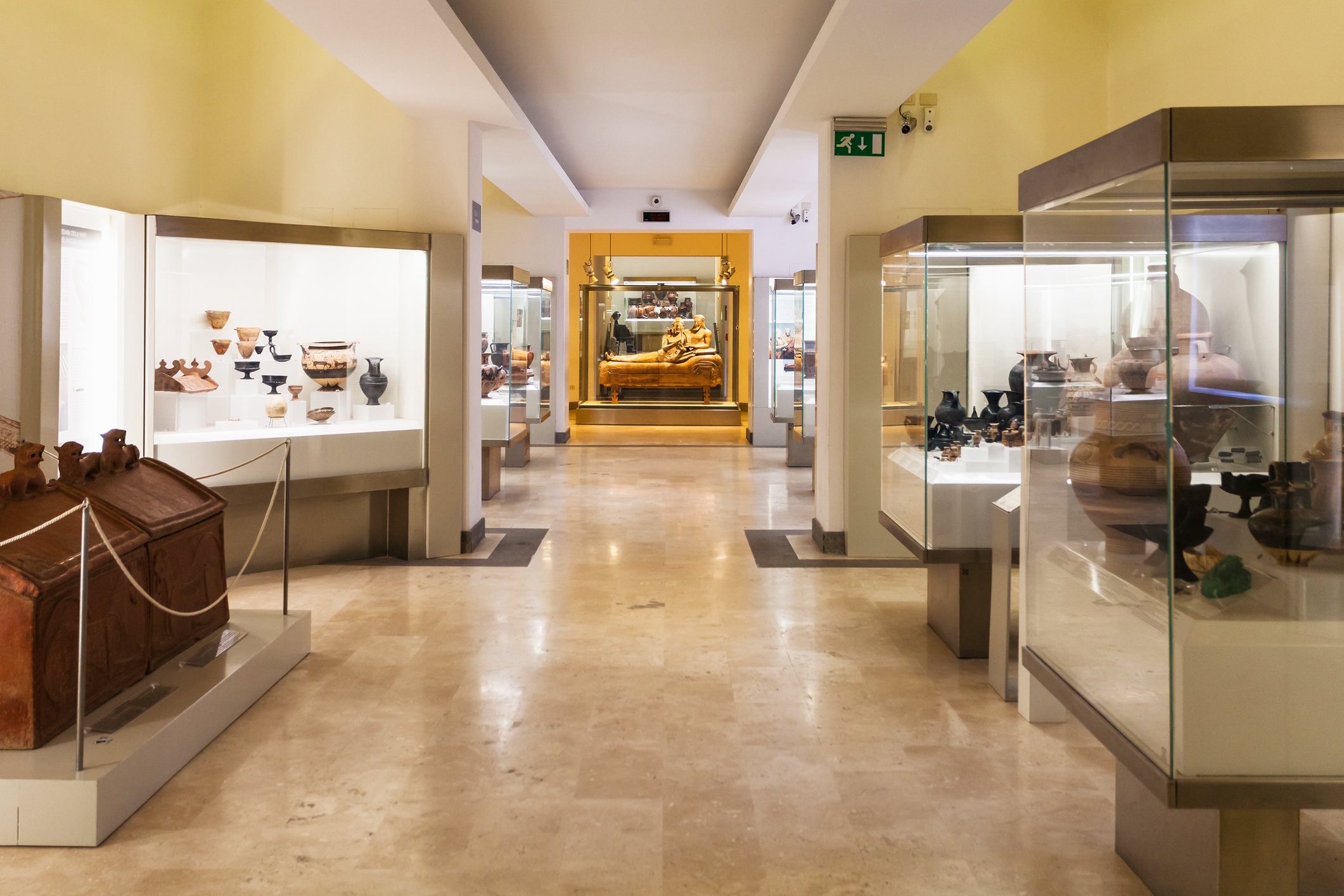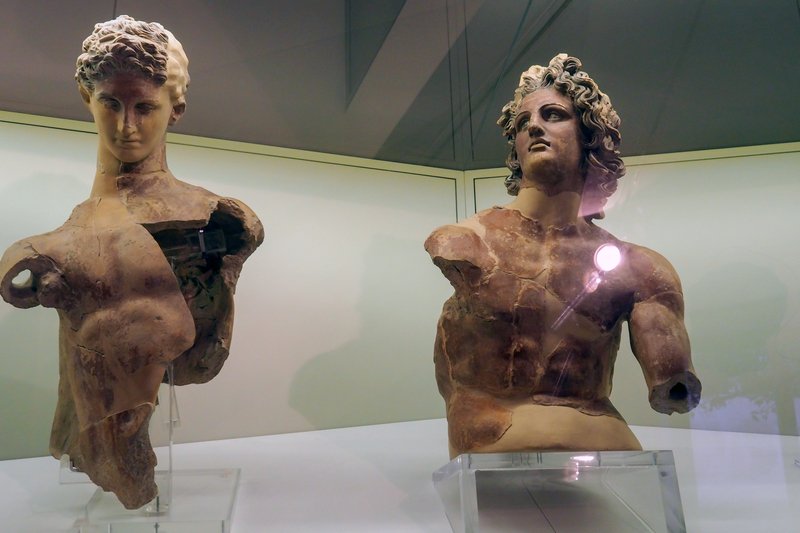Bella Roma
One or two days in Rome is “pazzo” - (crazy). But, for some, that’s all the time you have to experience this memorable city where much of our modern world was born. So, if you have only one day or two days, put on your comfy walking shoes and start your day early with this recommended itinerary. There are so many places to see in this magnificent city. For my Roman friends, Luciano and Antonella, “Rome is the center of the universe.” So, how is it possible to see the universe in a day or two? I suggest you choose two or three sites a day. The rest will be waiting for you to explore another time. We will try to give you some of Rome’s flavor. So much of its ancient history spilled over and influenced our modern world. This is a snapshot of what’s possible for a brief visit which begins at the main train station, the Termini. Now, relax and… Pace yourself.
ONE or TWO DAYS IN ROME ON FOOT - PART ONE
Go to the main train station (Roma Termini) where you will be able to see and find the Red Double Decker hop on/off bus. Take it for the full ride so that you can see many sites, returning to the train station. Stay on. Take the bus back to Campo dei Fiori or Piazza Navona and get off the bus. They are near one another.
Start at the Campo de’ Fiori to see the morning market. Pick up some bread at the bakery in the piazza, Il Forno,one of the oldest in Rome.
Walk across the street to Piazza Navona. Treat yourself to a coffee in the piazza as you look at the Bernini fountains. Be sure to look at each of these spectacular fountains. You will see a lot of statuary and fountains in Rome. Many of them were built or sculpted by Bernini.
Next, walk towards the Pantheon and on the way, stop at The Church of San Luigi dei Francesci, to see the two masterpieces by Caravaggio, pearls of Baroque art. You will need euro coins to light them up.
In just one more block you will find the Pantheon. The Pantheon is a former Roman Temple built in the first century. It’s been a Catholic Church since 609 AD. If the Christians had torn this amazing structure down in the 7th Century, we would not have dome-covered buildings today. Michelangelo and Brunelleschi studied this dome to create the ability to have a closed dome. They were able to design the Duomo in Florence and the cupola of the Vatican as a direct result of studying this structure and figuring out how to close the top. Two Kings of Italy, one Queen and the artist Raffaello Sanzio are buried in the Pantheon. Statues of Roman Gods and Goddesses once adorned each niche. If a mass is going on, be sure to avoid that area and do not talk near those gathered. And don’t forget to Look Up!
Pantheon, the Ocular, Photo by Gina Sanders
Next, exit the Pantheon and turn right to go to the back of the Pantheon to the Basilica di Santa Maria Sopra Minerva. You will know you are in the right spot when you see a statue of an elephant in the piazza, designed by Bernini in 1667. Why the granite obelisk? This granite obelisk was one of many brought to Rome from Egypt in the first century. There are more Egyptian obelisks in Rome than in all of Egypt. This particular one was inspired by the landscape from a popular book at the time called The Dream of Poliphilus in which we find Egyptian artifacts and dreamy elephants. It seems fitting that Bernini included the obelisk since the church was built over (sopra) an old temple dedicated to Isis erected during antiquity.
Enter the current church, where you will see a Michelangelo sculpture to the left of the main altar, Christ the Redeemer.
Christ The Redeemer by Michelangelo, Photo by Photofires
Saint Catherine of Siena is buried in the sarcophagus, encased in glass, at the main altar. (Her head and one finger are in Siena). You may have noticed that body parts of saints were often separated and distributed to churches all over Europe. This was common practice at one point in the Roman Catholic Church’s history.
If it’s time for lunch, nearby at the north end of the piazza, you will find Maccheroni. Follow these directions or plug in the address below to your GPS. Take the street that parallels the McDonalds (that is another story) and follow it to the end of the second block and turn left. Walk one block and on the right corner you will see Maccheroni, my favorite place to eat Roman cooking in the area.
Maccheroni
Piazza delle Coppelle, 44
Tel: 06-68307895
Photos from the Maccheroni website
This is a favorite trattoria for lunch and dinner in Old Roma. Great for people of all ages because you can sit outside, watch people and the local activity. And best of all, locals dine here, which is always a good sign throughout Italy for great Italian food. It is a five-minute walk from the Pantheon and Piazza Navona. It is small and the tables are close to one another, providing indoor and outdoor seating. It looks like a dump, but the food is fresh and delicious and run by locals - for decades. The portions are quite large. The waiters can be a bit rough around the edges. Just smile and say “grazie” - thank you, and they will soften. Do NOT sit downstairs. Wait for a table on the ground level inside or outside.
Of course, there are many trattorias in and around the Pantheon, most are for tourists. So, if you prefer, go where your nose leads you.
ONE or TWO DAYS IN ROME ON FOOT- PART TWO
Piazza Del Popolo with twin churces Santa Maria dei Miracoli and Santa Maria in Montesanto and Obelisco Flaminio, Photo by Sanseven
For Part Two we will begin with two glorious hours with a suggested route and then the rest of the day, we provide several options. So, andiamo! (Let’s go!) Begin at Piazza del Popolo as your starting point. Piazza del Popolo is enormous. Take in the size of this piazza. Lots of historical gatherings have taken place in this piazza over the centuries. You may consider visiting the Museo Leonardo da Vinci on the north end of the piazza. A great museum for visitors of all ages. From Leonardo’s drawings, items have been constructed which you can see in their intended dimensions as designed by the Master. It’s remarkable to see the genius of da Vinci’s mind in each item selected for the museum exhibit. Many pieces can be touched by adults and children.
Next, cross the piazza to the stairs on the far end to get a panorama of the city at Terrazza del Pincio. This is a gorgeous park. Rest for a few minutes. Take in the sites and the fabulous view. You can get an idea of the size and grandeur of Rome from the terrace. In the metro area of Rome, there are over 4.2 million people, as of this update in 2023. Over 10 million visitors walk these cobblestones and streets each year.
The Spanish Steps, Photo by Chris Hill
Exit the piazza by walking back down the stairs from the Terrazza del Pincio to the Piazza del Popolo and as you pass the Basilica de Santa Maria in Montesanto, walk down Via del Babuino for about 20 minutes until you reach the Spanish Steps in Piazza di Spagna.
But first, stop in at Hotel de Russie at Via Babuino, 9, and have a prosecco in the indoor courtyard. This is an elegant hotel quite used to visitors taking a look around and relaxing with a beverage. It is also a fabulous place to dine at night, outdoors in the garden. Pricey but lovely.
Once at the Spanish Steps, have some gelato and watch the people. You may see students playing music or perhaps some mimes. Take in all the sights and sounds and then depart for your next destination. You can not sit on the steps. It is no longer allowed.
Walk one mile to the Trevi Fountain by walking down Via di Propaganda. Use Google to get you to the Trevi. It will take about 10 minutes from the Spanish Steps. Enjoy the splendor of this fountain and toss two coins over your left shoulder with your right hand to ensure your return to Roma. One aqueduct provides the water to the Trevi and only the Trevi. You can take a tour of the underground view of the Trevi. Check Viator for tour info. And the coins, well those are collected and donated to local charities.
The Trevi Fountain, Photo by Tomas
From the Trevi you have many choices for additional routes to continue the afternoon or to save for another day. Pace yourself, especially if you are in Rome during the summer months when it can be insufferably hot and humid.
Route 1 – The Capitoline Museum
Walk to the Vittorio Emanuele II monument.
Victor Emmanuel II Monument
Stop in at the Capitoline Museum which is right next door.
The Capitoline Museum
Allow 1 to 2 hours here. The museum dates back to 1471. It was designed by Michelangelo and includes three structures including an underground tunnel that connects the two buildings. Closed Monday. Open 9 am to 8 PM Tues – Sunday
And if you are not a museum lover or in the mood for a museum, just walk up the stairs and stand in the courtyard to look at the building’s architecture. It is gorgeous and a perfect example of Renaissance architecture, perfectly symmetrical with a pleasing form.
Route 2 – Nero’s Palazzo, the Coliseum, The Forum and St. Clement
Walk to the Vittorio Emmanuel II Monument, a symbol of the nation, dedicated to the first King of a united Italy, and take Via Mecenate to the Domus Aurea. This is the recently discovered Palace of Emperor Nero. This place stretched for the equivalent of three or more city blocks. It was referred to as the Golden Palace. Enormous and impressive. Ruins are available for touring. Check the hours. If it is open, it is worth the experience to walk in, even if for 15 minutes to see the enormity of this three-block palazzo. Only a portion of it is unearthed and excavated and open to the public. It is basically a few MASSIVE walled rooms, one after the other. No furnishings. For centuries it was buried.
Photos of Domus Aurea by Beppe Castro, Eurico Rodrigues and Francesco Vignali.
Roman baths were built on top of what is the old ceiling. The baths are visible today from the outdoor garden.
During the Renaissance, painters and architects would find or make a hole in the ceiling and lower themselves inside with torches to sketch the beautifully painted walls designed by Favoloso, Emperor Nero’s “interior designer.” The Italian word, “favoloso,” entered the spoken language at that time. Later, “favoloso” became synonymous with beauty and eventually, “fabulous,” due to Favoloso’s work, and the sense of awe it inspired among the Renaissance artists. Sadly, only pieces of his work lasted intact through the years but, detailed colorful descriptions remain in 15th and 16th century writings. Walking through what is available is like walking back in time to the 1st century. You have to use your imagination.
Next, across the street, you will find the “Colosseo” - Colosseum. This is a MUST SEE in Rome. We suggest you hire a guide for this experience. They are available on-site. Look for the official Tour Guide credentials (hanging from a pouch usually around their necks.) The guides are typically young students for the most part trying to earn some Euro. Choose a tour that includes a walk through the Forum which is across the street from the Coliseum. Imagine! This was once the dump for Rome until it was excavated to look the way it does today.
Photos of the Colosseum, the Forum and the Arch of Titus by Steve Allen, Andrei Stancu, and Xantana.
The history that took place here is mind-boggling. It includes a small prison where the Disciples, Saint Peter and Saint Paul, were held and tortured before their executions in the 1st century. This is also where the Vestal Virgins lived, “technology” for heated floors for buildings was first launched, and many deities were worshipped. Why is so much of the Colosseum missing? In a word - earthquakes. How old is it? It is nearly 2000 years old. Construction began in 70 A.D. The Roman Army sacked Jerusalem in 70 A.D. and hauled back enslaved Jewish people for labor and a lot of gold, enabling the construction. A guide can share so much more and help make the Forum come alive for you as you walk through these amazing ruins, a UNESCO Heritage Site.
You will also see the Arch of Titus in the Forum. This is the first ancient Roman structure where the Jewish Menorah is represented in Roman Art for the first time, as one of the “spoils of war.” The Arch of Titus was built to celebrate Rome’s conquest of Jerusalem. This arch has served as the model for other triumphal arches built all over Europe, including the Arc de Triomphe in Paris. (Attributed to Wikipedia.)
Recently, the gladiator’s training quad and living quarters were discovered during some street repairs. It has been partially excavated and is open to the public.
And if you still have some pep left for more, I highly recommend a visit to nearby St. Clement Basilica for some “time traveling.” It is located just a few blocks from the Colosseo at Via Labicana, 95. This is a 12th-century Medieval church with rich frescoes and décor. It is built on top of a 4th century Roman place of worship which is built on top of a pagan temple. That’s right. Three-time periods which means three levels. You can see remnants of what remains. Excavations have uncovered Roman Houses under the Basilica dating back to 26 B.C.E. You literally travel through time as you explore each level of this structure.
Basilica of Saint Clement, Photo by K. Papaioannou
On the ground floor, you’ll see beautiful frescoes of the Roman Catholic Church fathers and some Saints in the main church behind the altar. The altar is similar to the Baldacchino in the Vatican. The Baldacchino is the canopy over the main altar at The Vatican. The Vatican’s altar is modeled after this piece, but the Baldacchino at the Vatican is immense, (over 90 feet tall) and is much more ornate, i.e., Baroque. The pillars of the Baldacchino at the Vatican are made from the brass plates that once were in square shapes on the ceiling of The Pantheon. They were taken, from this once pagan building, melted down and fashioned into the four enormous spiral columns you see today, with Bernini’s instructions.
As you leave the church area and descend to the two floors below, you will see ancient pagan and Roman artifacts. You will see a room where pagans who worshipped the Bull (the Bull Cult), gathered to perform their rituals among other remnants. The Basilica is free and entry to the lower levels is about 10E and WORTH it!!!
Route 3 – Cinecitta
Photos of Cinecitta Entrance and Movie Set by Valerio Rosati
Book a tour of the Cinecitta Movie Studio for the afternoon. Book your tour in advance online. Great fun! Tours are available in English. For the last 80 years, films have been made on this lot. Classics like Ben Hur and Catch-22 were filmed at Cinecitta. Closed Tuesdays. Individual and family visits must be booked by email: visit@cinecittaluce.it
Route 4 – Let’s Cook
Book a cooking class. There are several options online. We like Cesarine which offers cooking classes in the homes of Romans. Here’s the link:
Cooking Classes in Rome | Cesarine
Route 5 – Shop in Trastevere
Take a taxi to Trastevere. Walk and shop. This is one of my favorite areas of Rome. It is much quieter and loaded with delicious cafes and boutiques for shopping. Don’t miss Artigianino for fabulous wallets, purses, belts, and more. Outstanding quality and prices. Check the Artisan’s tab to learn about the founders.
While you are in Trastevere, stop in at one of the most beautiful churches of the 900 in Rome and you will be dazzled by gorgeous mosaics- The Basilica of Santa Maria in Trastevere.
Route 6 - Etruscan Lovers and Fans of Contemporary and Modern Art
Take a taxi to the National Etruscan Museum of Villa Giulia. For those who are interested in the Etruscan and the Italic’s civilizations (in particular Falisci, Umbrians, Latins and Sabines), Rome has one of the finest Etruscan Museums in Italy, housed in the stunning Renaissance home, Villa Giulia - (Giulia = Julius). This belonged at one time to the papacy and was home to Pope Julius III’s mistress. In 1870, a group of men convinced the papacy to donate the villa to house these remarkable pieces of history for the benefit of a unified Italy. This gem opened in 1899. One hour is adequate time to take in the highlights of this museum and its 6000 objects on your own or you can book a guide for two hours.
Photos of the National Etruscan Museum in Villa Giulia by Anna Pakutina, K. Papaioannou and V. Voevale
If exploring Etruscan Art is not ideal for you, you can check out the virtual tour at your leisure and redirect your time to the National Gallery of Modern and Contemporary Art, housed in the Palazzo delle Belle Arti, where you can enjoy over 1100 paintings and sculptures of the 19th and 20th centuries by Impressionists like Degas, Monet, Rodin, Van Gogh and Italian icons like Canova, Modigliani, Manzu, Giacometti, Morandi and more.
National Gallery of Modern Art in Palazzo delle Belle Arti, Photo by K. Papaioannou
Alternatively, you can visit the MAXXI. The MAXXI is a national museum of contemporary art and architecture in the Flaminio neighborhood of Rome, Italy.
The MAXXI, Photo by Enrica Sacconi
Route 7 - The Vatican Museum
For those who want to visit the Vatican Museum, plan on a four-to-five-hour experience. We suggest an early-morning guided tour or a late-night, guided, private tour.
The Vatican, Photo by V. Kornilios
A Guide for Rome
A Guida - a guide for the Vatican - Christina Mifsud
Christina has a Master’s degree in Art History and has two professions as a teacher at Loyola University in Rome and as a licensed tour guide for the Vatican and for the region of Tuscany with a special emphasis on the city of Florence where she has lived for the last 30 years. Contact her to arrange a tour.
touritaly@gmail.com
Favorite Places to Eat in Bella Roma
Photo by Helen Ross
“Cena” - Dinner
In the Jewish Ghetto
Piperno
Monte De’ Cenci, 9
(06) 688 06629
Restaurant. Jewish specialties, great location.
Il Sanpietrino
Piazza Costaguti
(06) 688 06471
Elegant. Tasty food.
The Testaccio section of Rome is where new restaurants are popping up.
Perilli
Via Marmorata, 39
(06) 574 2415
Excellent Carbonara.
Near the Pantheon
Maccheroni
Piazza delle Coppelle, 44
Tel: 06-68307895
Near Piazza Navona
Ristorante la Campana
Viccolo della Campana, 18
(06) 68-67-820
The oldest restaurant in Roma, a favorite. Around the corner from Hotel Due Torri. North of Piazza Navona, and an easy walk from any hotel in Old Roma. Classic Roman cooking, great pastas and vegetables, reasonable prices, great waiters who've been there for years and years.
Near Campo de’ Fiori
Pier Luigis
Excellent seafood. Lots of outdoor seating. Generally, live music in the evenings. Well worth the high prices which are tough to avoid in Roma. A fabulous restaurant. Service a bit weak, but the food is incredibly tasty.
Forno Campo de’ Fiori
Pizza by the slice – EXCELLENT! Sold by the gram to go. Scrumptious bread, pastries and cookies. Order first, then take your ticket to the cashier to pay before picking up your order, wrapped in paper to go.
“Pranzo” - Lunch
Near the Pantheon
Da Gino
Viccolo Rosini, 4
(06) 687 3434
Trattoria. Tiny. Snug. Family run for two generations. Flavorful Roman cuisine.
Near Piazza del Popolo
Buccone
Via di Rippeta, 19
(06) 36-12-154
Big wine and gourmet food shop located in a 17th century palazzo near Piazza del Popolo. Has a few tables serving fresh pastas, vegetables and meats at “pranzo.” An Enoteca, open from 9a-8:30p.
For budgeting, note that ristoranti (restaurants) are typically more expensive and formal than trattorias or enotecas.
NEWS
”Antonia’s Italy - Rome,” is available on Amazon. You will find 8 walking tours, places to shop and eat, and parks to get away from the crowds.
Available on Amazon
NOTE: Updated January 2025

